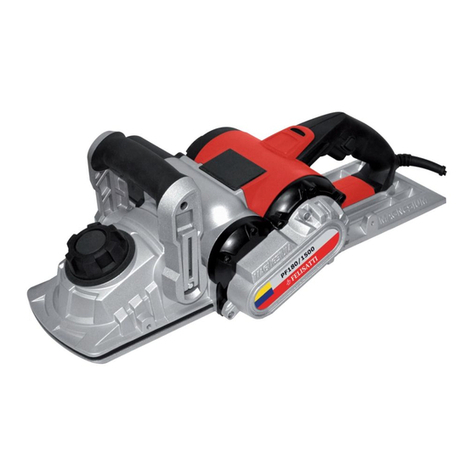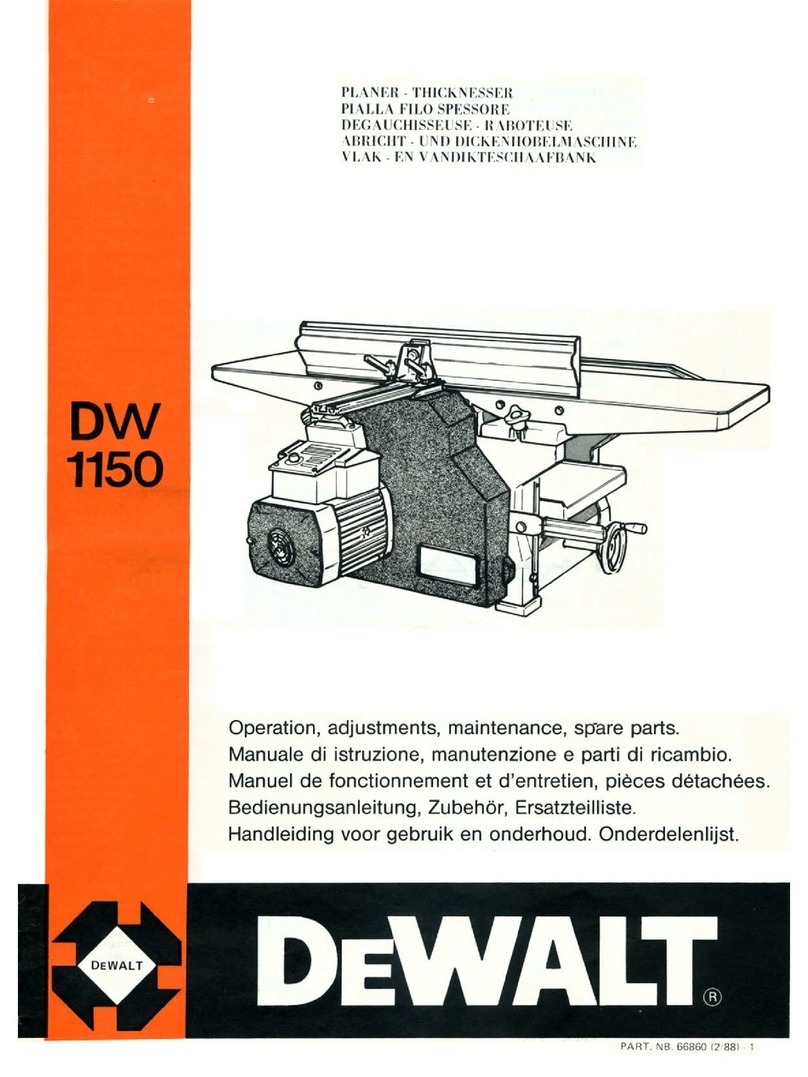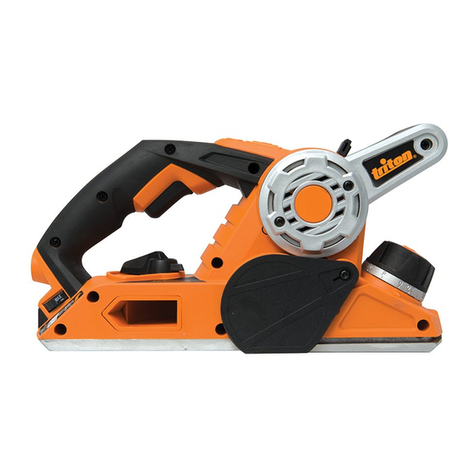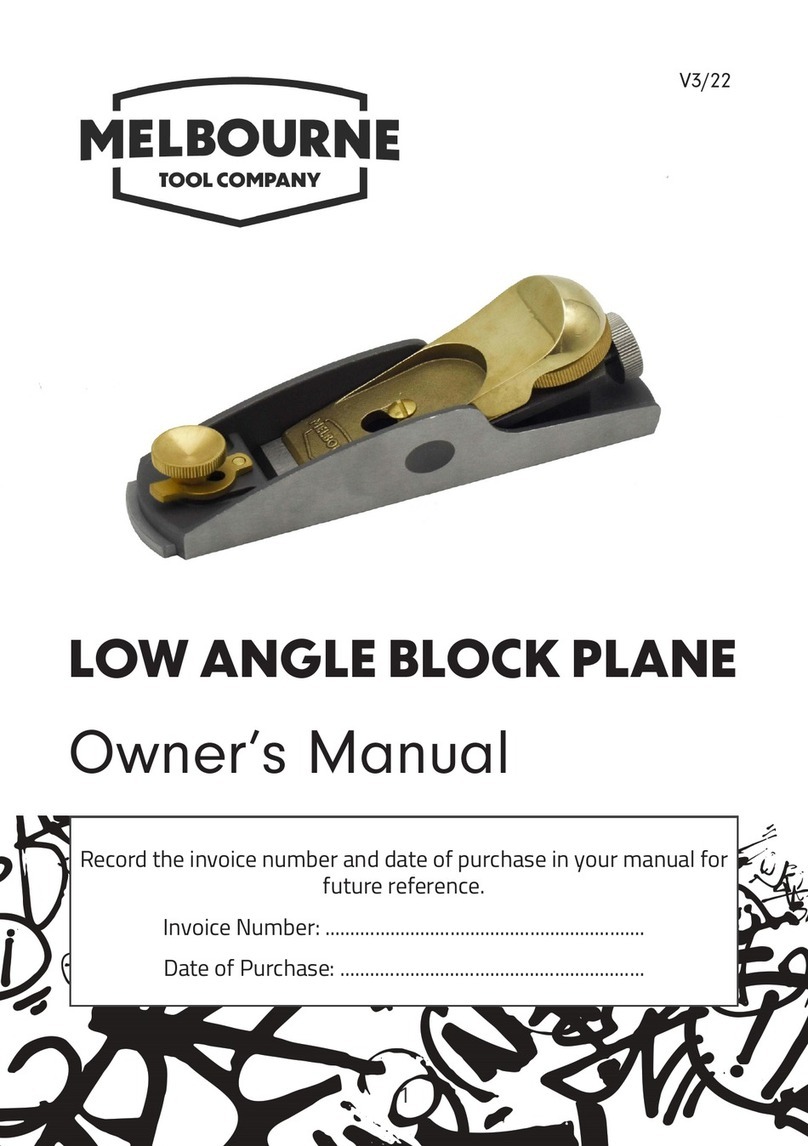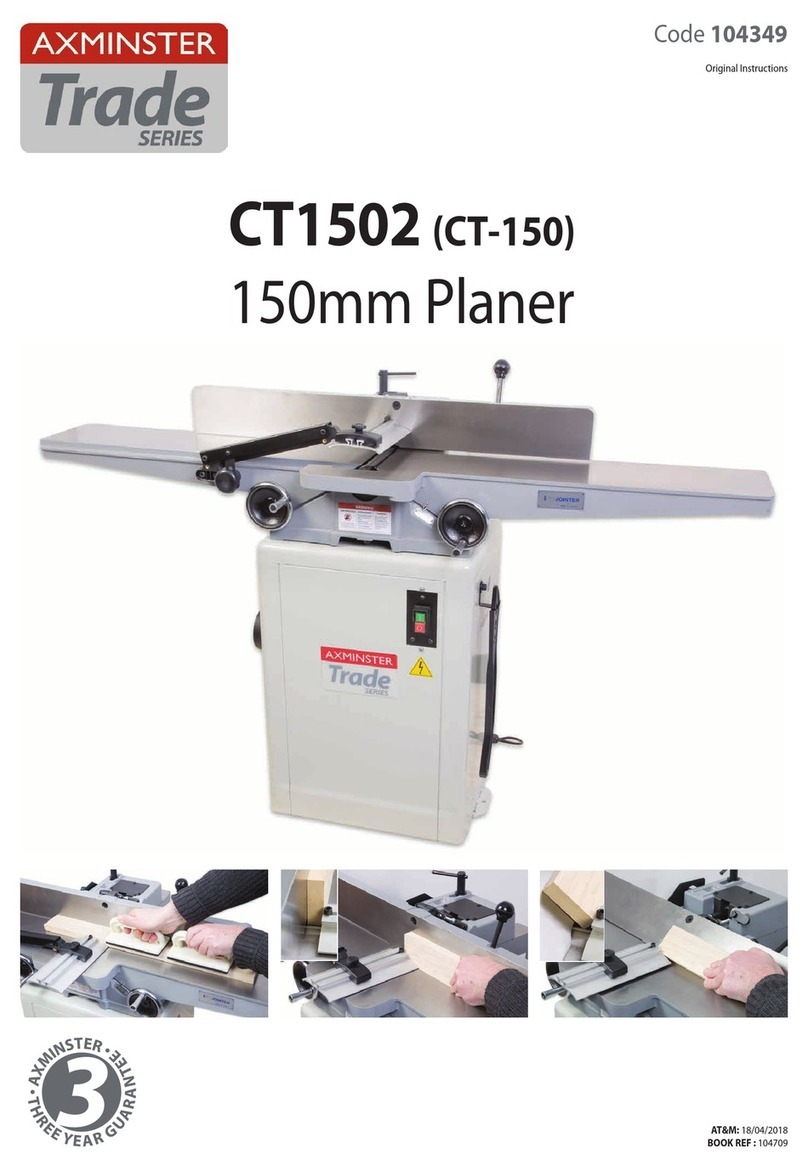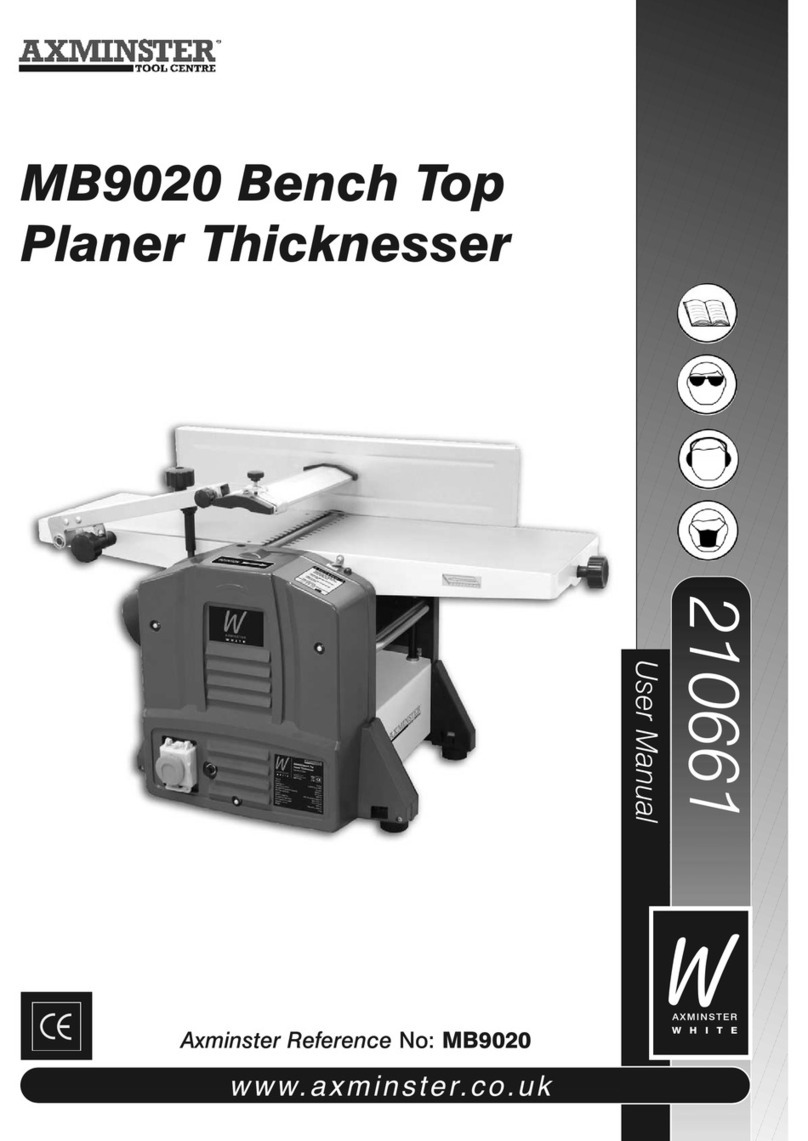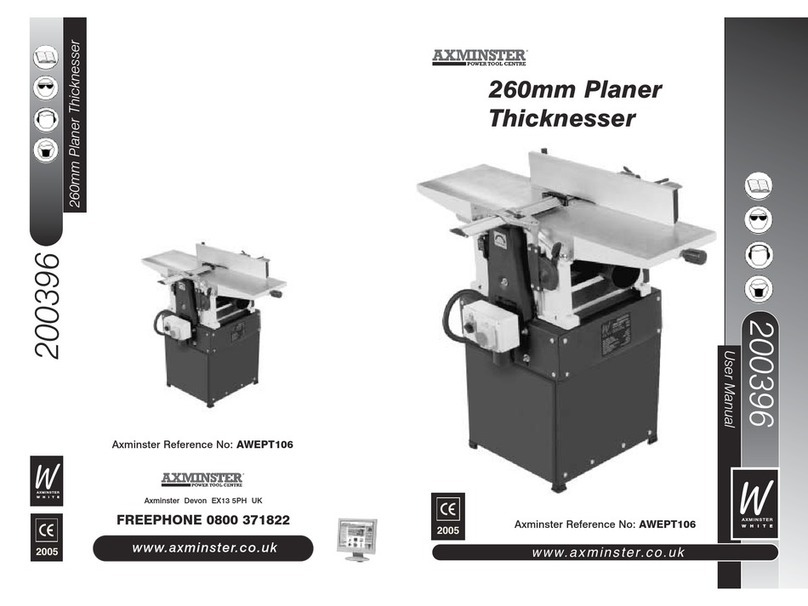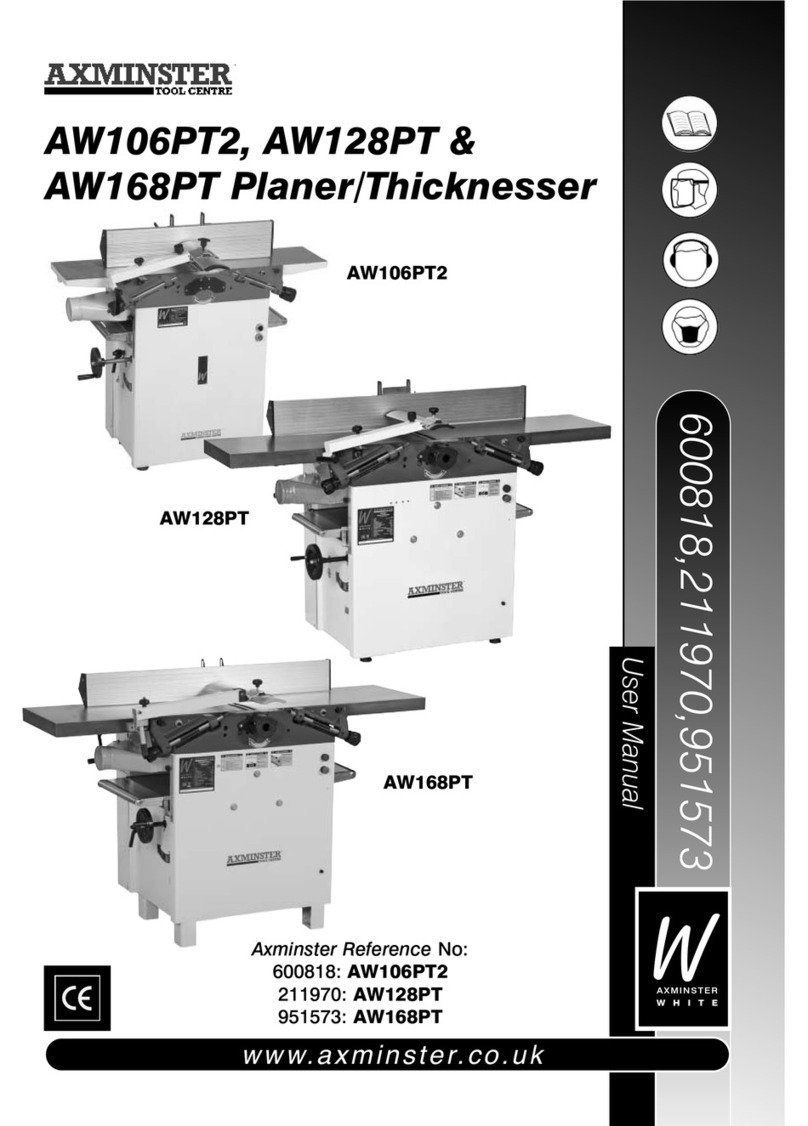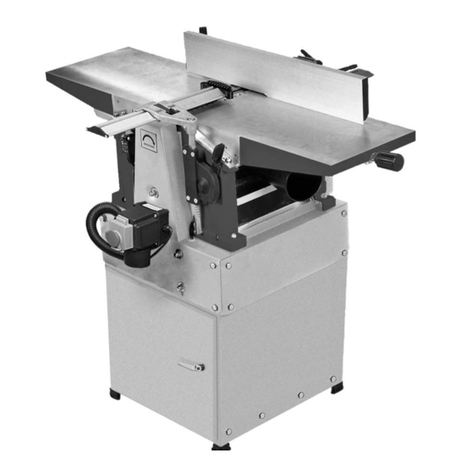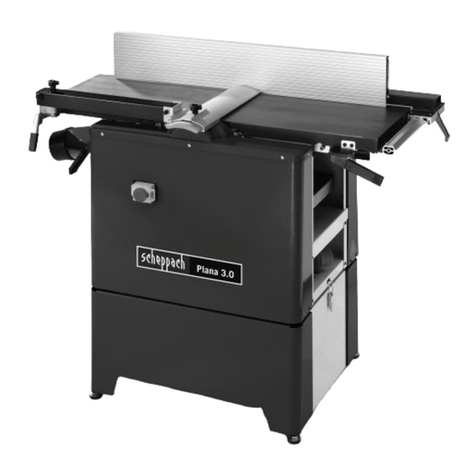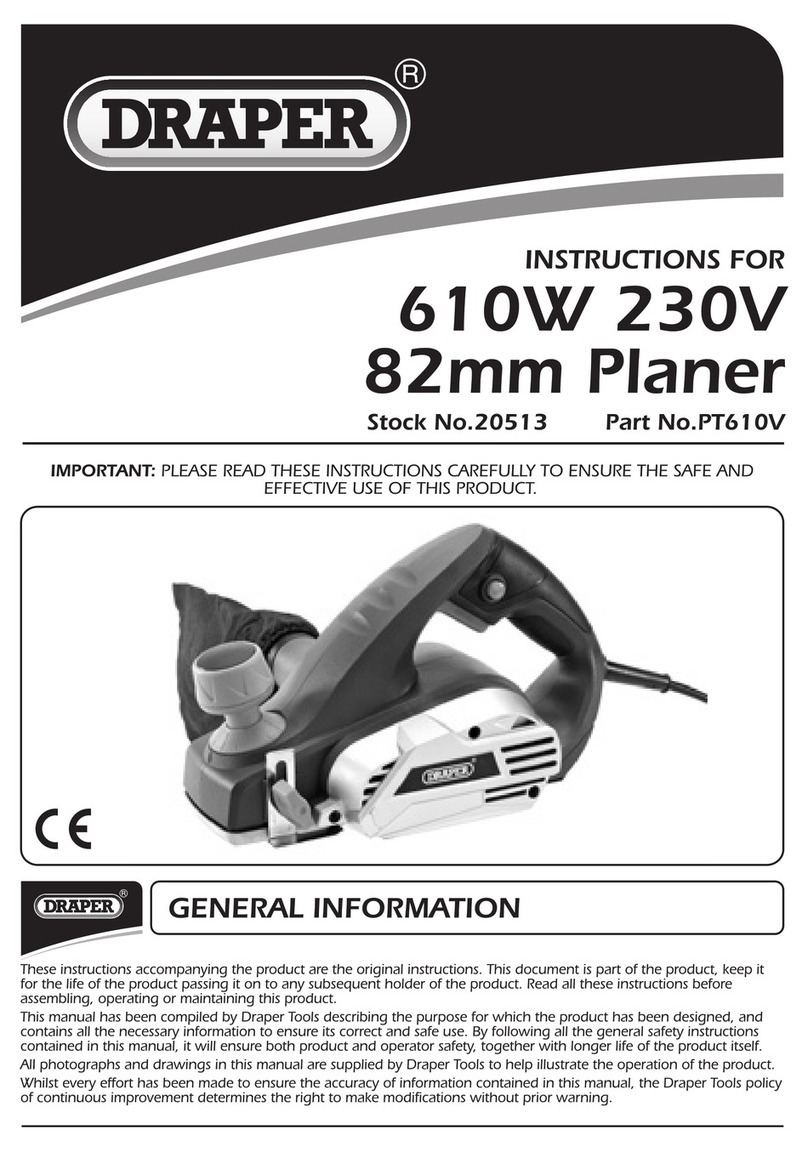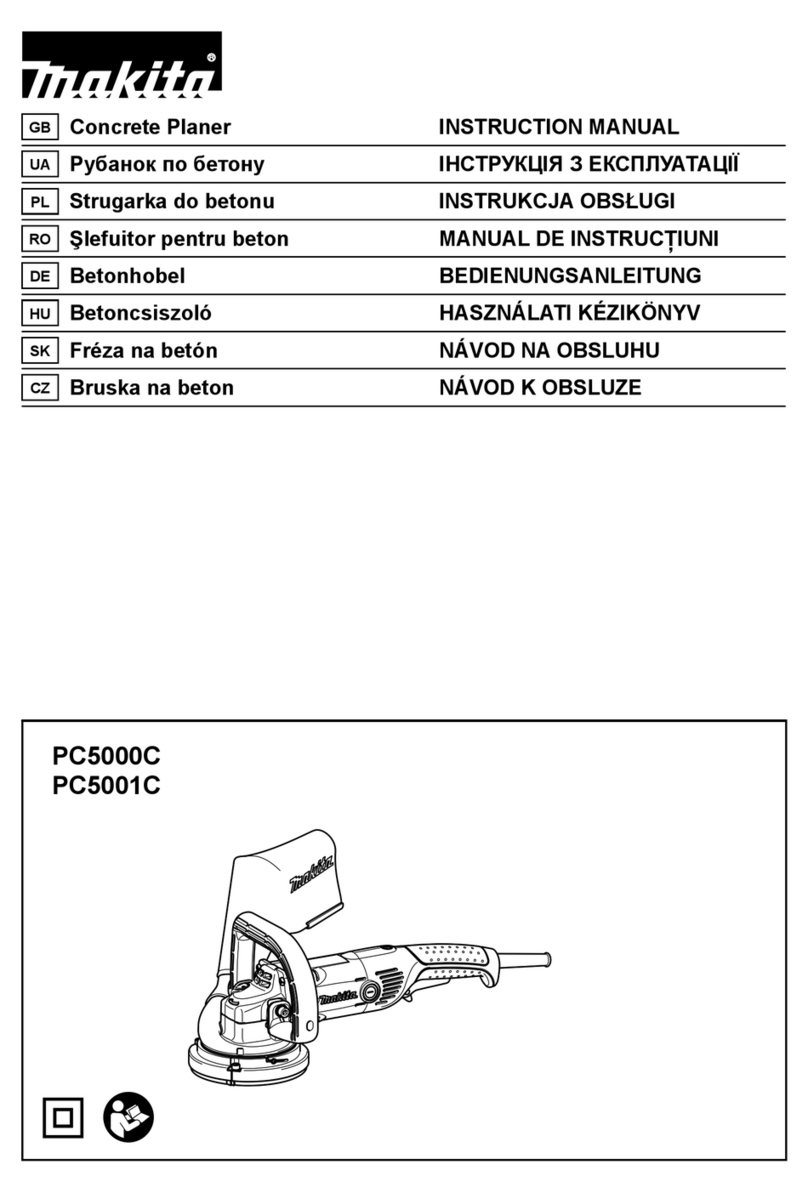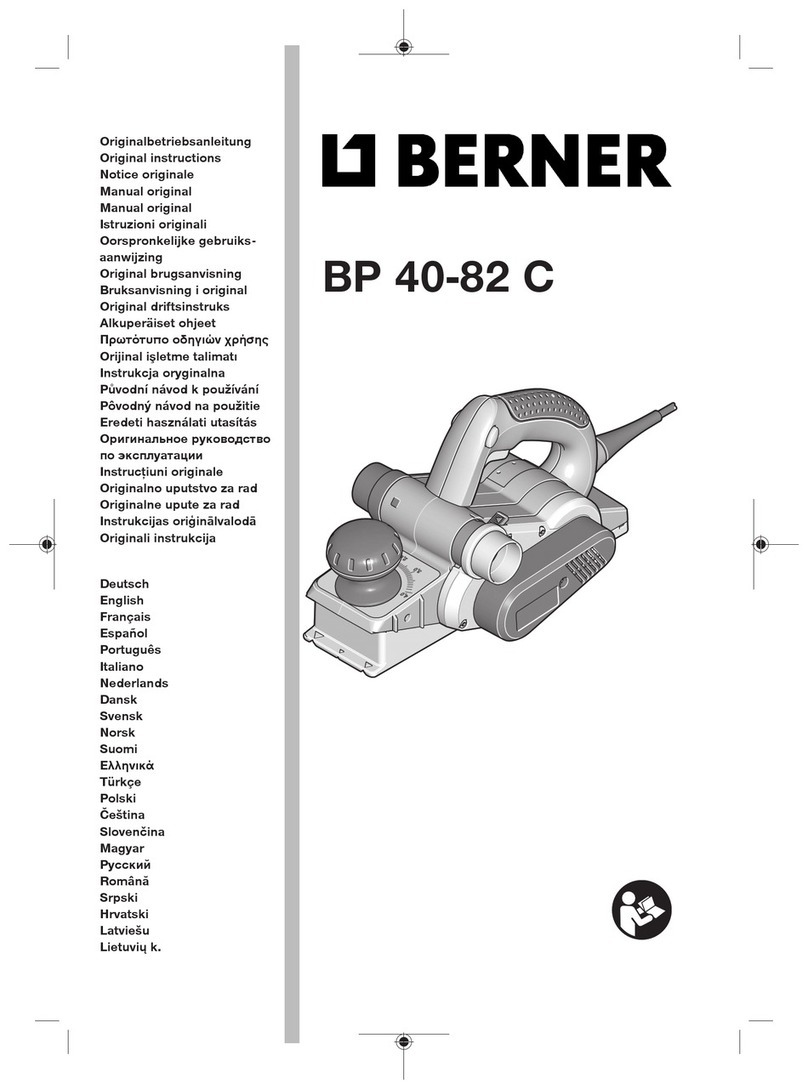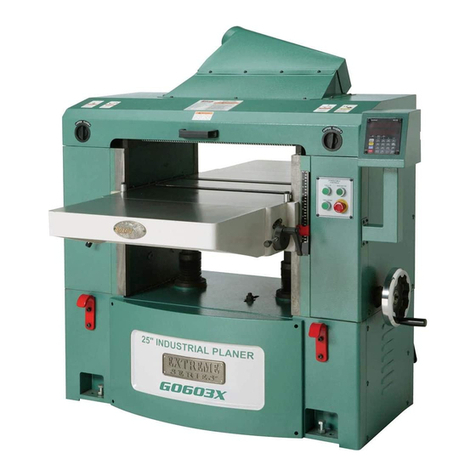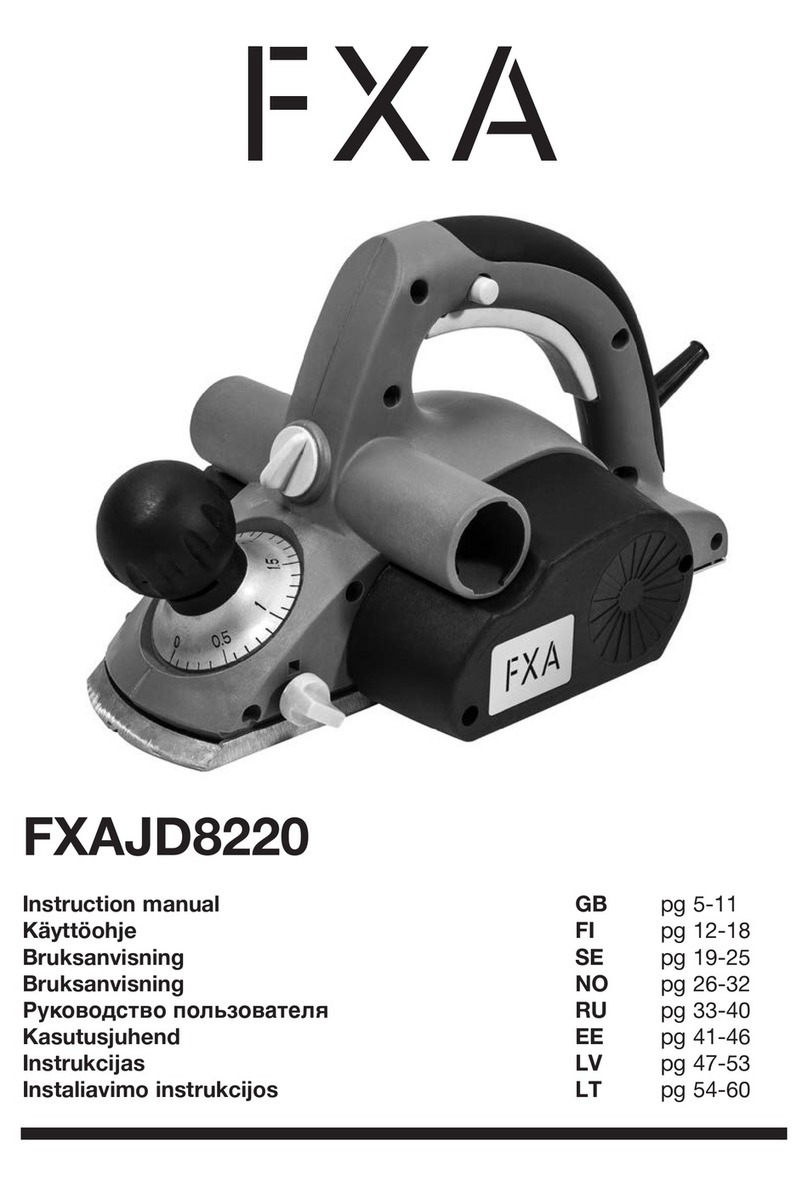06
Initial Assembly and Setting Up
Your machine comes enclosed in a packing case with
the accessories packed on top of the tables.Having
removed the top and the sides of the packing case,
remove all the components from the top of the
machine; put to one side. Ascertain the orientation of
the machine and move it to its desired position in the
workshop. Ensure that the machine is positioned to
allow sufficient clearance both in front and behind the
machine to cater for the maximum length of timber
you will wish to machine.
Remember sufficient space must be left ‘around’ the
machine to facilitate your stance when overhand
planing and moving from end to end of the machine if
you are thicknessing singlehandedly. Remember that
when the surface tables are ‘up and out of the way’ for
thicknessing, the machine is appreciably wider than
when it is in overhand mode.The machine is bolted
down on to the pallet that forms the bottom of the
packing case. Remove these ‘hold down’ bolts. In the
packet on top of the tables you will find 2 No. small
‘eye’ bolts. These screw into the top part of the
machine casting (as shown in fig 1.) and can be used
to hoist the machine clear of the pallet. If you do not
have the availability of such a hoist, and are going to
have to ‘manhandle’ the machine off the pallet; make
sure the tables are locked down before applying any
lifting force to them.
IT IS NOT RECOMMENDED THAT LIFTING, PULLING
OR PUSHING IS CARRIED OUT AGAINST THE
TABLES.
However, if expediency dictates that this is the only
method to dismount the machine, this is what must
be done. Do Not under normal circumstances lift, push
or pull the machine using the tables. Any movement is
best carried out against the main frame cabinet.
The machine should be positioned on a flat level
surface. Final levelling can be accomplished using the
levelling bolts in the base fillets of the legs. Once the
machine is in position, and level, it can be bolted to
the floor if so required.
Before adding the fence and the guarding (i.e. with the
machine ‘clean’) it is a good idea to remove the
protective grease film that is coating all the unpainted
parts of the machine. Use a proprietary de-greasing
agent or paraffin et al. Unfortunately, this cleaning
process is always a bit ‘mucky’, you are advised to wear
overalls or coveralls etc., during the process. After
cleaning, especially if you used paraffin, lightly coat
the exposed metal surfaces to prevent any rusting.
Bear in mind the stuff you will be machining and its
possible finishing process, when you choose your
anti-corrosion agent. Locate the planer fence, the
planer fence base, the two handled clamp nuts and
washers. Bolt the ‘T’ yoke to the planer fence base.
Span the bosses of the ‘T’ yoke with the two elongated
slotted lugs of the fence which are loosely bolted into
the fence. Fasten the fence to the yoke using the
handled clamp nuts and washers, position the fence as
required and fasten the four bolts that secure the
mounting lugs.
Your AW106PT2, AW128PT and AW168PT offers the
facility of your being able to plane right or left
handed. Decide on the best and most comfortable
position for you. Locate the fence mounting bracket
and fix to the machine casting as shown in fig 2, using
2 No. M6 x 12mm caphead bolts; depending on your
preferred handing. Introduce the planer fence base
into the bracket; so that the planer fence base slides
into the fence mounting bracket; then secure;
positioning the fence approximately mid-table (see fig
3). Mount the overhand plane guard arm onto the side
of the outfeed table that corresponds to your
preferred handing,then fit the overhand cutter block
guard. In the accessories packet there is a small spring
metal plate - this fits into the overhand guard
clamping assembly to spread the load of the guard
clamp onto the guard. It also prevents the bolt scoring
the upper surface of the guard,fasten in position using
the guard lock (see fig 4).
